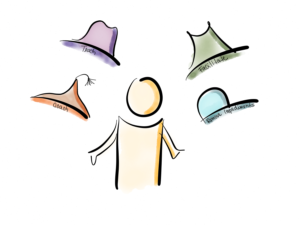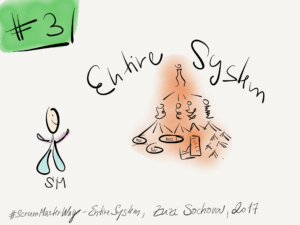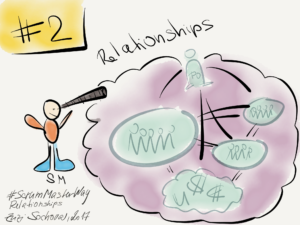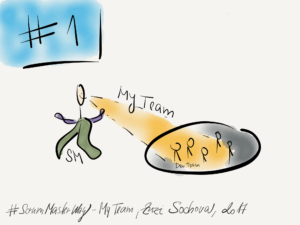Quite often during the last few months, I heard people being frustrated with not functioning ScrumMasters. One reason for it described in a post Why Some Organizations are Laying of “ScrumMasters” is that those are not the real ScrumMasters, but hiring Scrum “Project” Masters, Scrum “Ceremonies” Masters, or Scrum “Jira” Masters which will neither help organizations to achieve their business goals nor people to feel better or do a better job and as such it can only result in “Dark Scrum”. But surprisingly there is a whole bunch of experienced ScrumMasters who are unlucky enough to be hired to traditional organizations as ScrumMasters to “manage” individuals who only focus on delivery. There is often no intent to change the way of working, managers are trying to keep the status quo and make sure the ScrumMasters have no power to introduce any practice. “You need to ask HR if you like to work with people. Just manage the ceremonies,” they say. I guess I don’t have to say that the whole experience is very frustrating for everyone. Teams are saying the ScrumMaster is not helping them and ScrumMasters burn out very soon. I usually say no to such an environment as they are not ready for a change. Personally, I always try to look for someone who would sponsor a change. If there is no willingness no bigger vision, then why am I here in the first place at all.
However, if I take such an opportunity, you need to start looking at the ScrumMaster role differently. In the first place, ScrumMaster is a leader. And that brings a whole new perspective on his role. As a first step, it’s about the vision, or I would even say a dream. Where do you want to see your organization or team? Why is it important? I rarely do anything because my job description says so, of it was in my KPIs. I did that because I believe that the individual people, team, and organization will benefit from that action. I often fight the system and most of the time challenge the status quo. So that’s where you need to start. Have a strong enough dream that is that you go for it no matter what. Even if you win the lottery, you will be going to work and trying to change things so that your dream becomes true. Sometimes there is a wrong perception that agile is about that sunny smiling environment and no performance. So let me be clear, the first thing you need to start with is business. I often ask organizations before I start helping them with change, implementing agility, or improving their current Agile/Scrum implementation why do you need to change, and they almost always say a number of reasons why is it important – predictability, time to market, customer satisfaction, flexibility, quality, technical debt, innovations, … Then I ask them what happen if they don’t change. Surprisingly, very often they pause and say well, nothing really. We are successful, we earn some money, we are good enough. So in many cases, they don’t feel the sense of urgency needed for a real change. And unless you help them to have a sense of urgency, no real change will ever happen. Can they improve? Yes. Can they adopt some practices? Most likely. But would they change their mindset and their way of working? Not that likely. So if you take a job somewhere, here are a few points you need to take care of.
To start with, answering the following three points is essential:
- Why – define business goals. How the organization is going to benefit from a change? Why is it important for us to change? What happens if we don’t change?
- Who – define your allies. Changing an organization is never one man show, it’s too complex for that, so create a team. It’s more creative and innovative and will better address the complexity of the system. Create a transformation team that will guide the organization around its agile journey.
- What – define your dream together, your vision of the change. What needs to change? What would it look like?
Once you initiate the change, you need to keep going.
- Communicate. And when you do so, communicate again. And again. And again. Agile brings very different way of working, different mindset, and different perspectives. Hearing it once is usually not enough.
- Remove obstacles. Transformation teams often create a transformational backlog with impediments and things that need to improve. For example, education and understanding, legal and contracts, PR and motivation, but also things like cross-functionality, self-management, individual goals, etc.
- Celebrate success. Even a small step is worth celebrating. Don’t forget that. It works for both teams involved and also for the people around who might get inspired and give it a try. Don’t forget that it’s not agile that scales. Success scales.
- Keep changing. Agile is about continuous change. Look for small improvements, and change step by step. You never going to be done, but you will always see progress if you look back. So don’t stop changing. There is always a better way.







